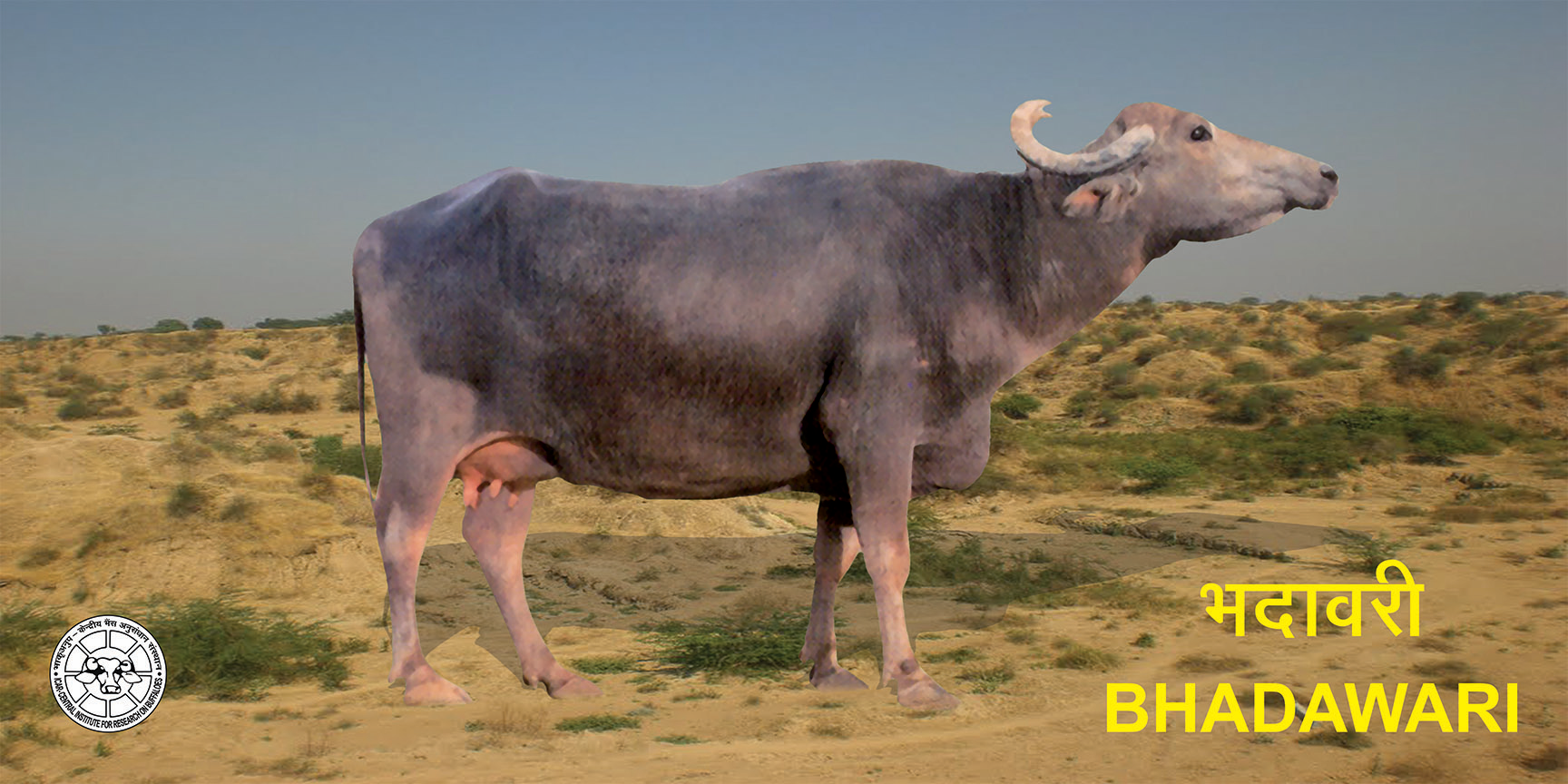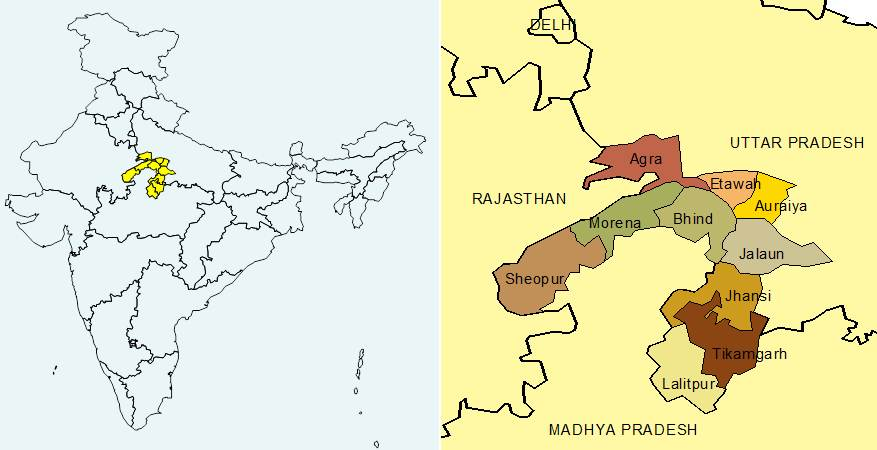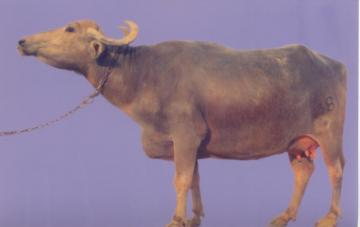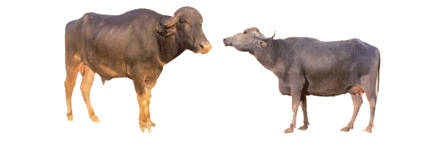Bhadawari Buffalow
Back
Bhadawari:
The Bhadawari buffalo is a breed of water buffalo from India. It is actually an improved water buffalo breed from Uttar Pradesh, India.

The breed is kept mainly for milk production in the Agra and Etawah districts, and also the Bhind and Morena districts of Madhya Pradesh.

Bhadawari breeding tract
The Bhadawari buffaloes have adapted to the harsh conditions of the ravines with undulating topography, thorny and scanty bushes, climatic stress and draught conditions. They are said to be resistant to many tropical bovine diseases
Cows usually lactate during 272 days with an average milk yield of 752–810 kg
It is also known as Bhadwari and Etawah.

The Bhadawari buffalo is specifically renowned for the high content of buttermilk fat found in their milk (which ranges from 6 to as high as 13 percent).
These animals are efficient in converting animal feed into butterfat. And their unique, advantageous profile therefore attracts farmers of many developing countries to inter bred them with one of the best breed of buffaloes, the Murrah buffalo breed.
Increasingly important in the livestock industry of countries with agricultural-based economies, the resulting hybrid breed of the Bhadawari and Murrah both enhances the milk production of other low-yielding breeds and creates a better market for liquid milk.
Bhadawari are reported to be a regular breeder giving a calf per year in the field condition. They have comparatively low milk yield but the milk tastes sweet with high fat and a flavor that is unmatched
Physical Characteristics
Body color
Bhadawari animals are usually copper coloured with scanty hair, which are black at the roots, and reddish-brown at the tips, sometimes the hairs are completely brown.
Horns
The horns are characteristically placed, flat, and compact and of average thickness, growing backwards and then upward turning inwards with slightly pointed tips.
Tail
The tail is long, thin and flexible running down the hocks with black and white or pure white switch.
Body
Bhadawari animals are medium sized with wedge-shaped bodies.
Head
The head is comparatively small, light and bulging out between the horns and sloping down slightly towards the forehead. In males it is slightly heavier and coarse.
Ear
Ears are of average size, rough and pendulous.
Udder
The udder is not so well developed as in the case of Murrah buffaloes, but the milk veins are fairly prominent.
Teats
The teats are of medium size though not of uniform length.

• The Bhadawari buffaloes are medium sized animals with wedge-shaped body.
• They have comparatively small and light head, bulging out between the horns and sloping down slightly towards the forehead.
• They are generally copper colored with scanty hair, which are black at the roots and reddish-brown at the tips (sometimes the hairs are completely brown).
• There are two white lines at the lower side of the neck, which is a distinct feature of these animals.
• Their horns are curled slightly outwards, parallel to the neck with the tips curled upwards.
• The head is slightly heavier and coarse in males.
• Their tail is long, thin and flexible running down the hocks with black and white or pure white switch.
• Ears of the Bhadawari buffalo are of average size which are rough and pendulous.
• The udder of the cows is not so well developed as in the case of Murrah, but the milk veins are fairly prominent. The teats are of medium size, though not of uniform length.
• The animals can easily tolerate the extreme weather conditions in the ravines where maximum temperature goes up to 48oC.
• Unlike Murrah buffaloes they do not demand frequent bath and wallowing, but enjoy it if given a chance.
• Average body height of the mature bulls is around 128 cm, and around 124 cm for the cows.
• The mature bulls can reach around 475 kg live body weight, and the cows can reach around 425 kg.

Uses
• The Bhadawari buffalo is a dairy buffalo breed. It is raised mainly for milk production.
• Due to high butter fat content the milk of this breed is highly suited for ghee making, which is the common village industry.
• They are famous for the efficient ability to utilize low quality coarse fodder available in the area.
• They mainly subsists on coarse feed, straw and corn products, roughage such as barley, wheat, straw, cornstalks, sorghum and sugar cane residuals.
• They can survive on low quality crop residues and green forage under dire circumstances.
• Because of its small size these animals can be reared even by marginal and landless farmers.
• The male animals of this breed are considered to be one among the best for ploughing the marshy paddy fields and the mortality rate in the calves is quite low as compared to other breeds.
For further information about Bhadawari buffalo
https://www.roysfarm.com/bhadawari-buffalo
https://buffalopedianew.cirb.res.in/bhadawari/
